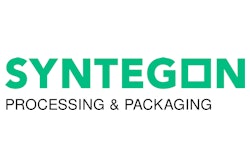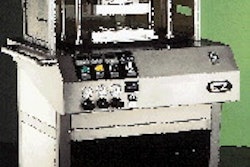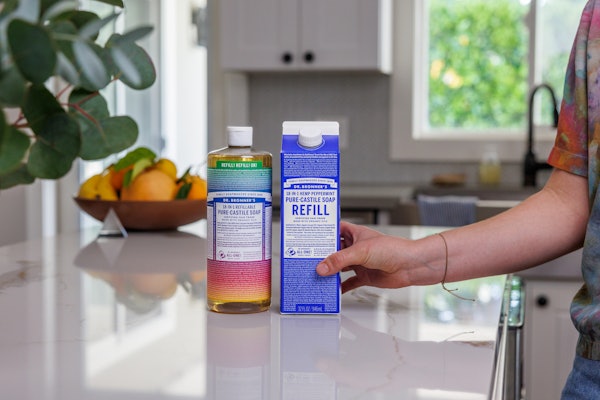Ensure is a line of milk-shake-like "liquid foods" developed for adults by Ross Products Div., Abbott Laboratories, Inc. (Columbus, OH). For some time, Ross has been packaging its various Ensure formulations in both steel and polypropylene/ethylene vinyl alcohol (EVOH)/polypropylene cans with easy-opening, beverage-style ends. The high-barrier plastic cans are produced by Packaging Resources, Inc. (Lake Forest, IL). At different times and in different locations, Ross has also offered the shakes in barrier plastic bottles with foil membrane heat seals or threaded closures. The Ensure packages (shown) are aseptically filled into cups thermoformed from PP/EVOH/PP sheet. Each cup holds 8 oz of product. Heat sealed with a lamination of PP/foil/polyester, the cups feature low-density polyethylene overcaps and are marketed in recycled paperboard carriers by Jak-Et-Pak of Riverwood Intl. (Atlanta, GA). Detailed nutrition information is displayed on 360° wraparound pressure-sensitive labels. Ross has experimented with both preformed and cups produced on thermoform/fill/seal equipment from Robert Bosch GmbH (Waiblingen, Germany). Easy opening for seniors The 3"-diameter membrane seals on these cups are recognizable as Top-Tab(TM) membranes from Unipac Corp. (Aurora, Ontario, Canada). To facilitate opening by Ensure's target consumers (older adults), the multilayer membranes incorporate a half-moon tab that extends across the full diameter of the seal. Instructional graphics on the membrane direct consumers to grip the tab near the perimeter of the cup and pull it up. Ross isn't saying much about its newest Ensure packaging, so the rationale for using both the LDPE overcap and a paperboard carrier that provides both side as well as facing panel shrouding of the cup tops can only be surmised (perhaps to help stabilize the containers during transit and prevent the cups from getting out of round, causing leakers). In choosing cups for its shakes, Ross is opting for a more genteel, "drinker-friendly" container than its squat, food-style cans. If the cups do well, they may become a permanent part of the Ensure packaging mix. But they may have even broader significance outside of Ross Products. Beer and carbonated beverage marketers are currently responding to consumer preferences by putting up their potables in bottles and cans with ever wider mouths. Taking their quest for wide mouth containers to its logical conclusion, they might well examine the marketing advantages and barrier potential of thermoformed or injection-molded cups for their products. Plastic cups, of course, have been used for some time to serve juice to school children and airline passengers. In many international markets, conference attendees and parched tourists slake their thirsts with sips of water offered in clear, membrane-sealed cups. The technology gap that needs to be breached before CSDs and beer could be economically packed in consumer-appealing cups (styled to resemble mugs, steins and fountain glasses, perhaps) is a vast one. But it probably poses no greater challenge than does the current quest for a sculpted carbonated beverage can. We already have a choice of materials from which "drinking glass packages" might be made, including, naturally, glass, steel, and aluminum and various polymers including monolayer and multilayer combinations of PET, EVOH, PP, nylon and PEN, to name just a few. Closure technology needed Key to the possibility of oxygen-sensitive carbonated drinks in cups that preserve their effervescence and shelf life is the development of a new generation of wide-mouth closures, membranes and sealing systems. At the very least, these systems would probably need to absorb head-space oxygen, guard against oxygen ingress and hold fast under the pressures of carbonation and processing. At the same time, they would have to be engineered so that they could be removed with a carbonation-releasing whoosh using minimal effort on the part of consumers. Can it be done? Yes. Can it be done economically? Probably. Can it be done right now? No. But prospects for carbonated beverages filled into cups by the early 21st century are almost certain. And when they make their market appearance, those containers may well be based on some of the technology advances incorporated in the Ross Ensure cups today. c



























